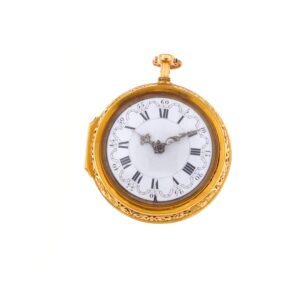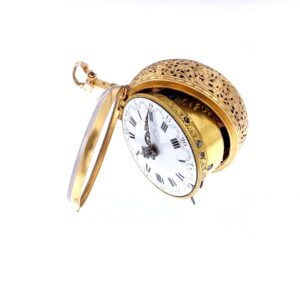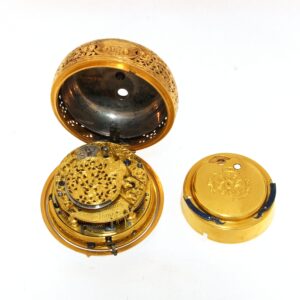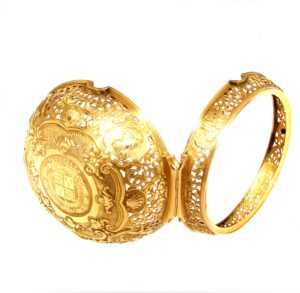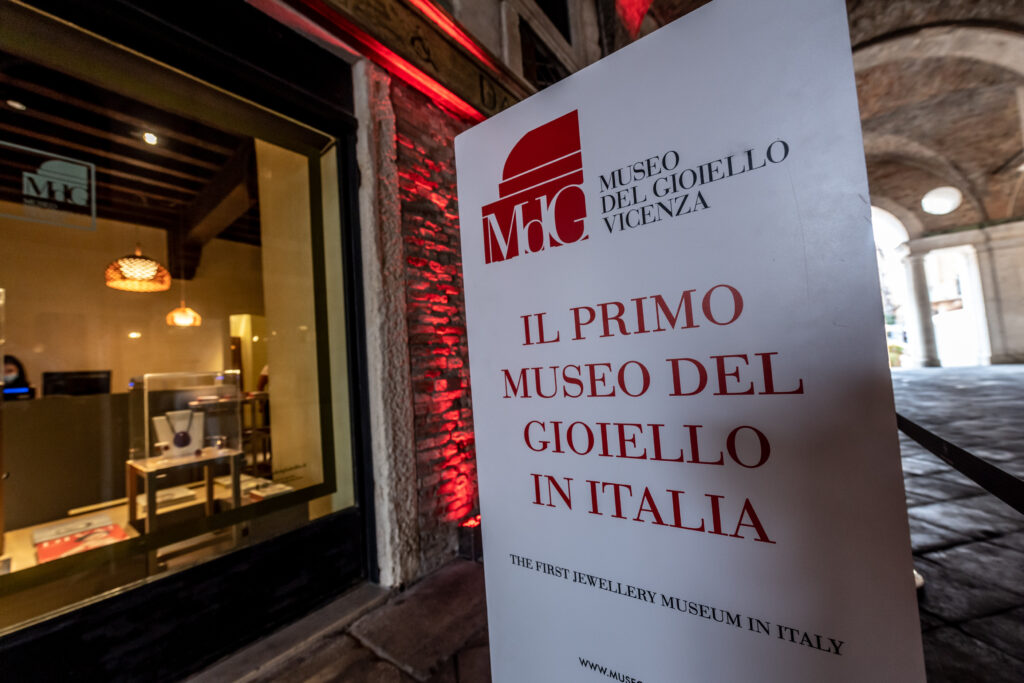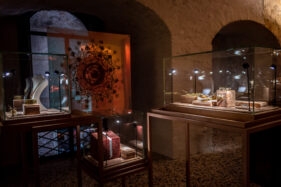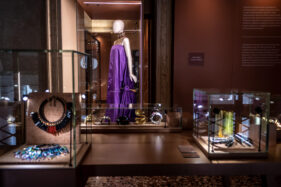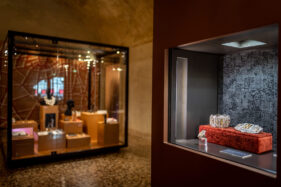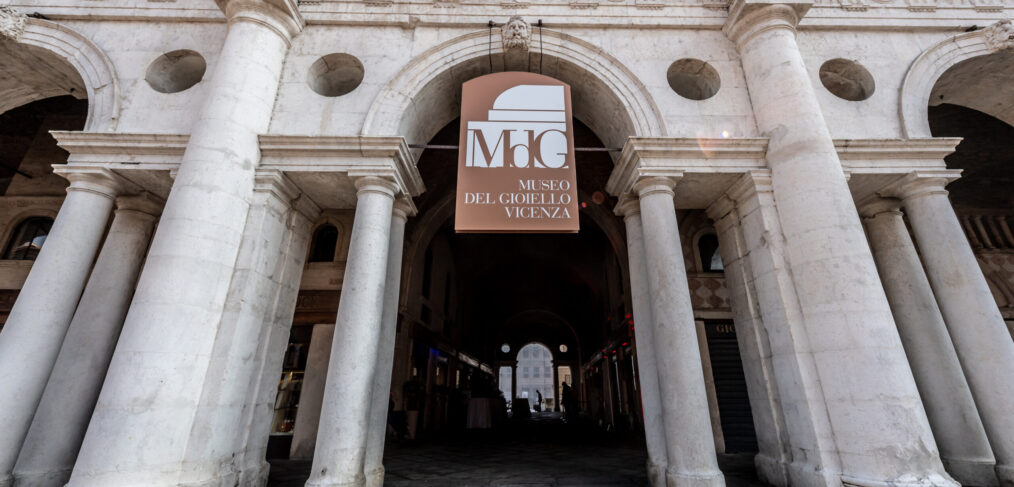
Jewellery Museum
A museum dedicated to Italian goldsmithing and jewellery art
History
Vicenza, it is known, is the City of Gold, as it boasts of producing one third of all Italian gold work.
Since antiquity, Vicenza has been one of Italy’s main centres for goldsmith production: as early as 1400, the Fraglia degli Orafi di Vicenza (Vicenza Guild of Goldsmiths), an association comprising no less than 150 artisans, was established.
But the vocation as a city of gold has much older origins. Its beginnings can be attributed to the Paleovenetian age, around the 8th century B.C., when the ancient Venetians began to express a craftsmanship already capable of producing worked metal objects of various kinds.
Their fame as skilled gold wielders and creators of wonders did not take long to spread throughout Italy, being immediately appreciated by the Venetians and later by the Church, which entrusted Vicenza’s craftsmen with the creation of precious artefacts. The period between the end of the 13th century and the 15th century offers interesting works of sacred goldsmithing: processional and processional crosses, precious chalices, reliquaries that document the development of local goldsmithing art and are currently conserved by the Diocese of Vicenza at the Diocesan Museum in Vicenza.
Renaissance: the golden age
The most flourishing period of the goldsmith’s art in Vicenza corresponds to the centuries of the Renaissance when it reached a high quality thanks to the mastery of illustrious goldsmiths whose names appear in the Matricola della Fraglia degli orefici of 1536. Among these stands out Valerio Belli, goldcraft, incisor and medallist among the most skilful of the time, a friend of Michelangelo and Raphael, famous for objects worked in rock crystal, some of which are preserved in the Museo Civico of Palazzo Chiericati.
Other great interpreters of the goldsmith’s art in the Matricola include Battista Dalla Fede, Andrea Palladio’s son-in-law, and a whole family of goldsmiths from Schio, the Capobianco family, who proved to be skilled in both goldsmithing and watchmaking.
Finally, among them Giovan Giorgio Capobianco, watchmaker, goldsmith, designer and mathematician. Also of interest is the figure of Cesare Capobianco, the artist who around 1577 built the Gioiello di Vicenza, the model of the city made of wood and covered with silver plates, destroyed by French troops in 1797 and rebuilt in 2011, with silver donated by Vicenza citizens.
With this fame and the ever-increasing demand, workshops in the city multiplied.
As early as the end of the 19th century, numerous small, mostly family-run companies began to develop in the city. By keeping the Vicenza goldsmith tradition alive, they were able to project themselves onto international markets and creatively innovate their production to the point of dictating fashion styles and trends.
In the 20th century, thanks to the establishment of the company ‘Fabbriche riunite d’oreficeria vicentine’ (FROV), which set the standard for all factory managers, owners and mechanics by producing bracelets, necklaces and watch straps, Vicenza projected itself as the world capital of the sector.
Vicenza Oro e Jewelery Museum
This transition marked the definitive evolution that later gave rise to initiatives such as VicenzaOro and the Museum of Jewellery, on the strength of the city’s now international reputation in this field.
The Museum’s exhibition itinerary is a journey through the centuries that allows visitors to discover works of art from the past and contemporary jewellery that interweave art, fashion, design and high jewellery; it is the first in Italy and one of the few in the world dedicated exclusively to jewellery.
Located in the marvellous 17th-century setting of the Basilica Palladiana, it offers an original cognitive experience of jewellery. In the nine exhibition rooms, bracelets, rings and necklaces are presented not according to a temporal but thematic criterion: magic, symbol, function, beauty, art, fashion, design, icons and the future.
The museum, created at the behest of the Ente Fiera, expresses the value of goldsmithing, not only by telling the story of Vicenza goldsmithing, but also by investigating the link between jewellery and man, why it exists, existed and will exist.
The masterpiece of great value and high art of Vicenza goldsmithing, kept in the museum to date, is the Monte Berico Crown and its Pectoral.
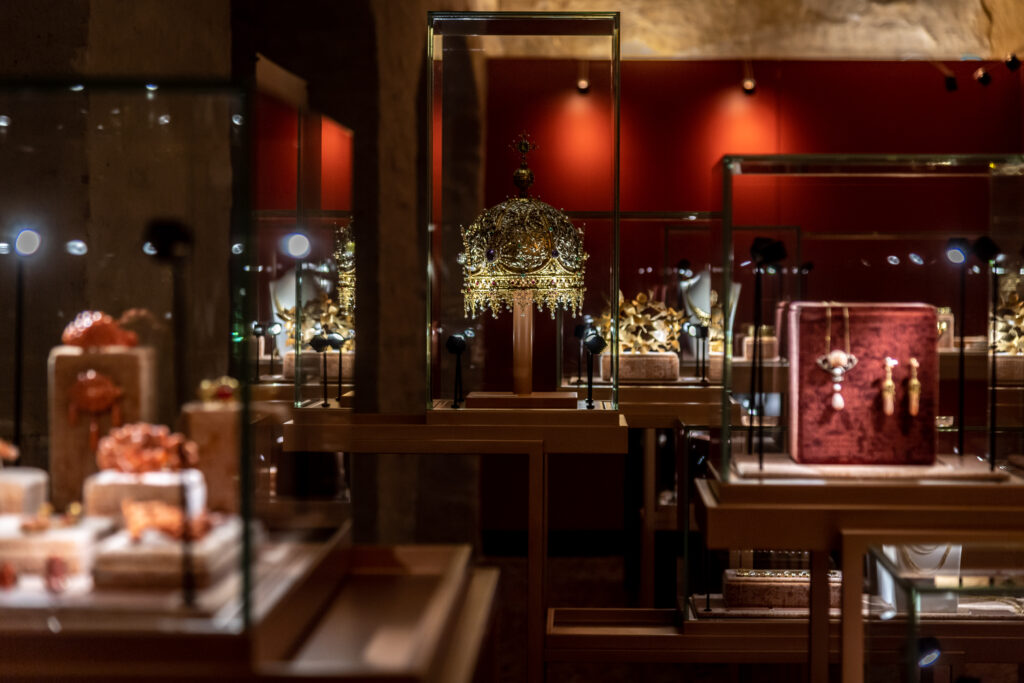
Our Jewellers lent some antique jewellery in the various editions of this exhibition, marking a piece of history.
Below are some photos of the jewellery on display.
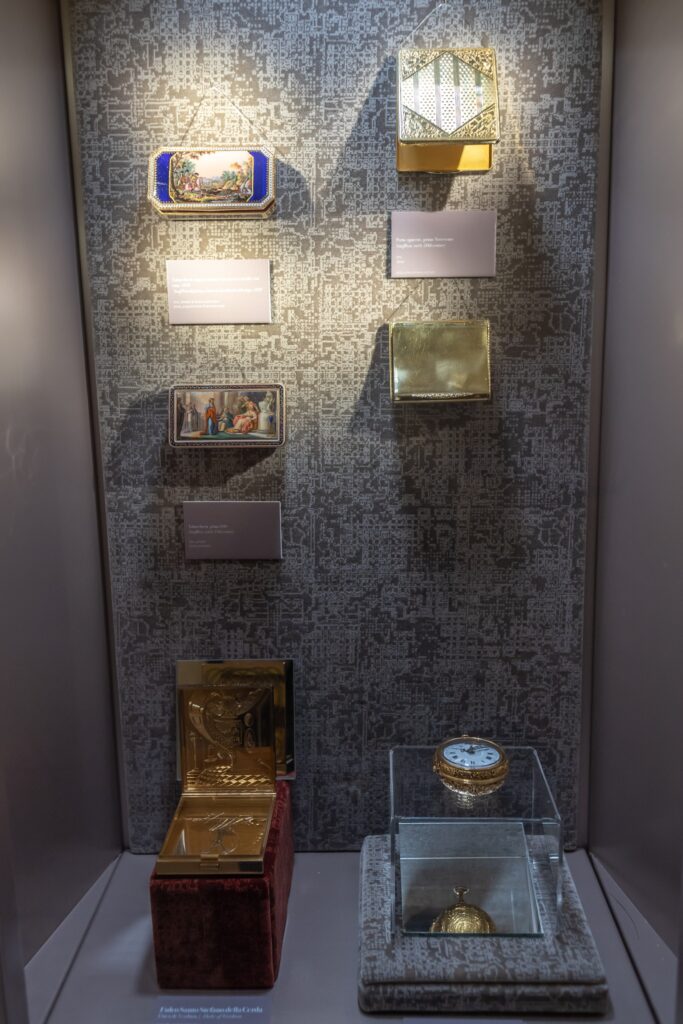
1820
Tabaccheria rappresentante una caccia a
cavallo con cani
Oro, smalti a fuoco policromi
Primo 800
Tabacchiera
Oro, smalti
Due scatole in oro
1750 ca.
Orologio da tasca a doppia cassa con
suoneria delle ore e dei quarti a richiamo su
campanello o “sorda” a tatto
Oro
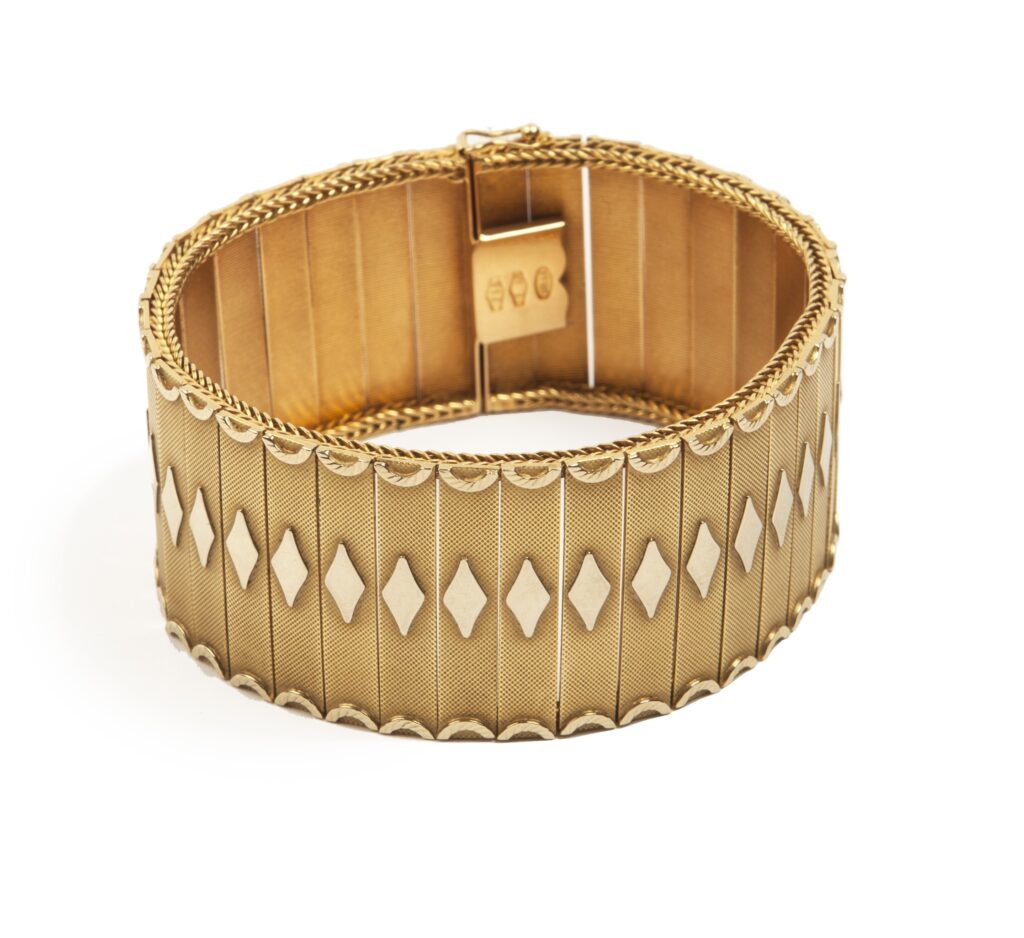
UNOAERRE Anni ’50 Bracciale Oro 750; piastre saldate a macchina con tecnica a spiga di grano Arezzo
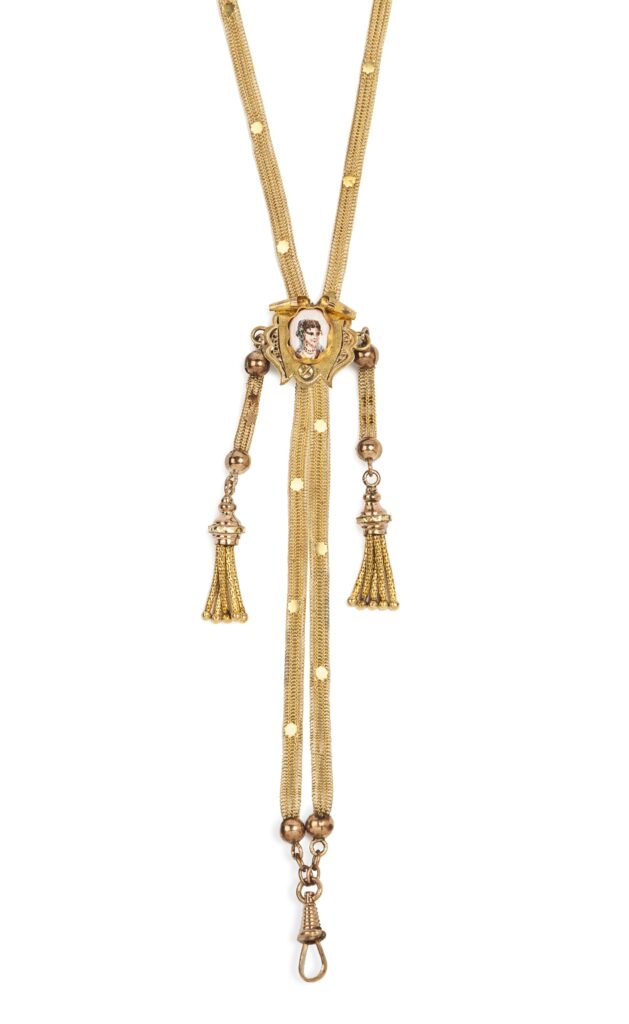
Fine ‘800 – inizio ‘900 Collana “saliscendi” Oro 750, smalti; maglia a tessuto Vicenza
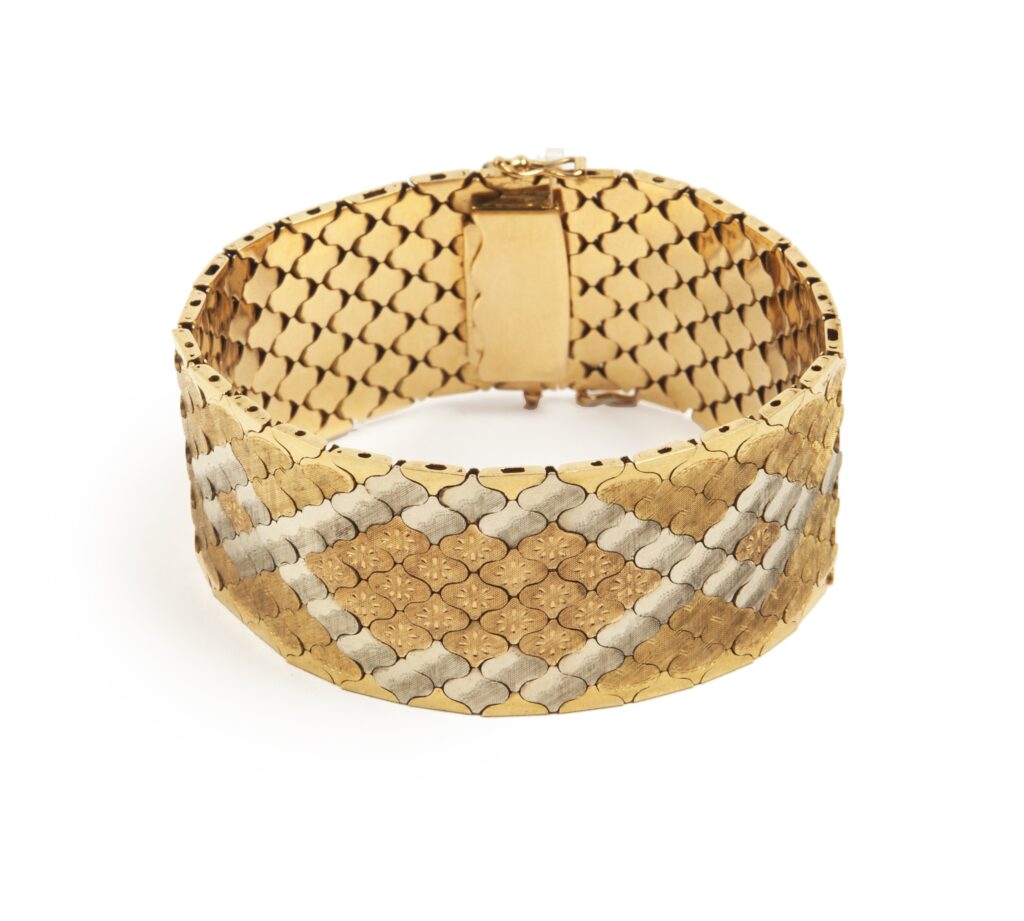
Anni ’80
Bracciale “tappeto”
Oro 750; impernato e inciso a mano
Vicenza, punzone 738
